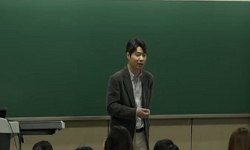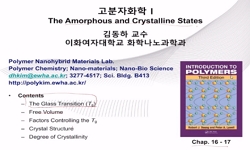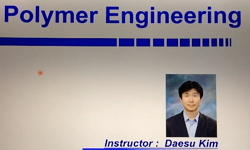‘Lifting thread’, currently used as cosmetic surgical thread, is a absorbable suture that is inserted subcutaneously to pull sagging skin, removing wrinkles. It also induces biological response from the skin tissue to form collagen capsule and exp...
http://chineseinput.net/에서 pinyin(병음)방식으로 중국어를 변환할 수 있습니다.
변환된 중국어를 복사하여 사용하시면 됩니다.
- 中文 을 입력하시려면 zhongwen을 입력하시고 space를누르시면됩니다.
- 北京 을 입력하시려면 beijing을 입력하시고 space를 누르시면 됩니다.
https://www.riss.kr/link?id=T15755999
- 저자
-
발행사항
청주 : 청주대학교 융합신기술대학원, 2021
-
학위논문사항
학위논문(석사) -- 청주대학교 융합신기술대학원 , BT융합학과 , 2021. 2
-
발행연도
2021
-
작성언어
한국어
- 주제어
-
KDC
514.26074 판사항(5)
-
발행국(도시)
충청북도
-
형태사항
43 p. : 삽화, 도표; 26 cm.
-
일반주기명
청주대학교 논문은 저작권에 의해 보호받습니다.
A Study on the Physicochemical Characteristics of Suture Compound
지도교수:김동욱
참고문헌: p. 37-41 -
UCI식별코드
I804:43007-200000360676
- 소장기관
-
0
상세조회 -
0
다운로드
부가정보
다국어 초록 (Multilingual Abstract)
‘Lifting thread’, currently used as cosmetic surgical thread, is a absorbable suture that is inserted subcutaneously to pull sagging skin, removing wrinkles. It also induces biological response from the skin tissue
to form collagen capsule and express myofibroblastic cells around the suture to complement aged tissue, ultimately showing anti-aging response of preventing sagging of skin and enhancing skin elasticity.
Amongst the commonly used threads used for ‘lifting thread’, Polydioxanone(PDO) shows great elasticity as it has been developed for suture of soft tissue with its advantage of cheap cost and short absorption period due to its low melting point. But it only lasts 6 months, which makes it impractical for long-term wrinkle removal. Poly L-Lactic acid(PLLA) is suitable for long-term wrinkle removal as its disintegration occurs over long period 2~4 years, but its low elasticity and high crystallization point and melting point debilitates its machinability and its commercially high cost also works as a disadvantage.
The current study has performed a comparative analysis of physical characteristics of a PDO/PLLA thread composed in a certain ratio of PDO and PLLA to improve short life of PDO and low elasticity of PLLA which
have been pointed out as their respective disadvantage and fulfill its intention as ‘lifting thread’. PDO/PLLA composite showed more homeogenous crystallization with higher content of PLLA, but its
crystallization point, melting point, and pyrolysis point increased, worsening its machinability. However, small addition of PLLA into PDO showed much lower crystallization point, melting point, and pyrolysis point than pure PDO100, increasing its machinability.
국문 초록 (Abstract)
현재 미용 성형사로 적용되고 있는 ‘리프팅 실’은 흡수성 봉합사를 피하조직에 삽입하여 처진 피부를 당겨 주름 개선 효과와 동시에 피부조직의 생 자극 반응을 유도해 봉합사 주변으로 ...
현재 미용 성형사로 적용되고 있는 ‘리프팅 실’은 흡수성 봉합사를 피하조직에 삽입하여 처진 피부를 당겨 주름 개선 효과와 동시에 피부조직의 생 자극 반응을 유도해 봉합사 주변으로 콜라겐 피막을 형성과 근섬유모세포가 발현되어 노화된 조직을 보완하여 피부의 처짐을 막아주고 피부 탄력을 증가시키는 항노화 반응이 나타낸다.
‘리프팅 실’로 많이 적용되고 있는 봉합사 중 Polydioxanone(PDO)는 낮은 용융온도(Melting point)로 제조비용이 저렴하고 분해기간이 짧다는 장점으로 연조직 봉합 목적으로 개발되었기 때문에 유연성이 높지만 체내에서 분해기간이 약 6개월로 지속시간이 낮아 장기간의 피부 주름 개선이 어려우며, Poly L-Lactic acid(PLLA)은 체내 분해 기간이 약 2년~4년의 장기간에 걸쳐 분해가 일어나 장기간의 피부 주름 개선 목적으로 적합하지만, 낮은 유연성과 높은 결정화 온도(Crystallization temperature)와 용융 온도(Melting point)로 인해 가공성이 떨어져 제조비용이 높아 상업적으로 고가의 단점이 있다.
본 연구에서는 단점으로 지적되어 온 Polydioxanone(PDO)의 낮은 분해기간과 Poly L-Lactic acid(PLLA)의 낮은 유연성을 향상시켜 ‘리프팅 실’의 목적에 부합되도록 일정 비율로 혼합하여 제조된 PDO/PLLA 봉합사의 물리화학적인 특성을 비교 평가하였다. PDO/PLA 혼합물의 분석결과 L-Lactic acid(PLLA)의 함량이 높을수록 결정구조는 균질화되었고 결정화온도(Crystallization temperature), 용융온도(Melting point), 열분해온도(thermal decomposition)는 높아져 가공성이 좋지 못하다는 것을 알 수 있었으나, 다만 Polydioxanone(PDO)에 소량의 L-Lactic acid(PLLA)가 조성될 경우 순수한 PDO100 보다 오히려 결정화 온도나 용융온도, 열분해 온도가 낮아져 오히려 가공성은 향상된 결과를 얻었다.
목차 (Table of Contents)
- 제1장 서 론 1
- 1.1 생분해성 고분자 1
- 1.1.1 생분해성 봉합사의 분해기전 2
- 1.1.2 생분해성 봉합사의 생체기전 4
- 1.1.3 리프팅에 사용가능한 생분해성 고분자 5
- 제1장 서 론 1
- 1.1 생분해성 고분자 1
- 1.1.1 생분해성 봉합사의 분해기전 2
- 1.1.2 생분해성 봉합사의 생체기전 4
- 1.1.3 리프팅에 사용가능한 생분해성 고분자 5
- 1.1.4 고분자 소재의 열분석 7
- 1.2 연구의 목적 9
- 제2장 실험재료 및 방법 10
- 2.1 Materials 10
- 2.2 Method 12
- 2.2.1 In vitro 가수분해 가속시험 12
- 2.2.1.1 다른 pH조건에서의 가수분해 가속시험 13
- 2.2.2 다양한 pH조건에서의 인장강도 변화 실험 14
- 2.2.3 전자주사현미경(SEM) 관찰 15
- 2.2.4 시차주사 열량분석 (Differential Scanning Calorimetry, DSC) 15
- 2.2.5 열중량 분석 (Thermo gravimetric Analysis, TGA) 15
- 제3장 결과 및 고찰 16
- 3.1 기계적 특성 해석 16
- 3.2 주사전자현미경(SEM) 25
- 3.3 PDO/PLLA의 시차주사 열량분석 (Differential Scanning Calorimetry, DSC) 28
- 3.4 PDO/PLLA의 열중량 분석 (Thermo gravimetric Analysis, TGA) 31
- 제4장 결론 33
- * 참고문헌 37
- * Abstract 42












